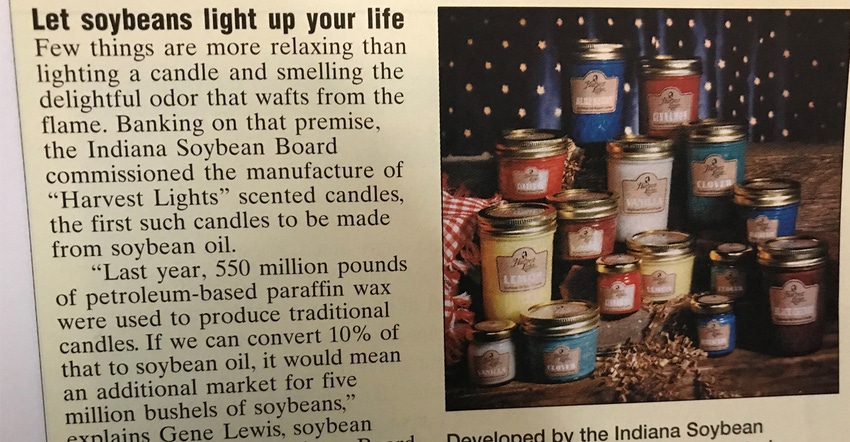November 5, 2018

Twenty years ago, a "what's new" from the soybean industry was Harvest Lights, scented candles made from soybean oil. Developers estimated that capturing just 10% of the traditional paraffin candle market would produce a market for an additional 5 million bushels of soybeans.
Harvest Lights candles were also advertised to burn cleaner and cooler, leaving behind no sooty residue. The initial offering of candles came in three sizes and a choice of blueberry, black cherry, lemon, vanilla, cinnamon and clover scents. You can still find them online.
100 years ago
The Weekly Kansas City Star made a pitch for women readers in the Dec. 7, 1918, edition of Kansas Farmer. The Weekly Star promised "four complete novels a year, free advice on social forms and beauty aids, war time menus, suggestions for lessening kitchen drudgery, and an active campaign on behalf of nationwide suffrage for women, prohibition and better lights, heat and water for farm homes." A full year's subscription was 50 cents.
70 years ago
Sweet clover was being widely touted for its soil-building ability. Farmers were being urged to plant sweet clover as a way of adding nitrogen to the soil, as well as providing tilth that helped the soil absorb and hold moisture. Wheat seeding into land where clover had been grown in the prior season showed a significant yield advantage.
60 years ago
Corn growers in Kansas and 25 other commercial corn producing states voted in 1958 for a new program calling for the elimination of corn acreage allotments and for a new method of setting support price for the 1959 and succeeding crops.
Under the new program, there will be no restrictions on acreages planted to corn and price supports on a national average basis will be 0% of the preceding 3-year average price received by producers of corn, but not less than 65% of parity.
50 years ago
The protein of the Kansas wheat crop in 1968 was 11.7%, down from the previous year's 12.9% but pretty close to the 10-year average if 11.9%.
In fact, Kansas records showed that protein content of Kansas wheat had been right around 12 percent every year since 1948, with little evidence that the content had been increasing or decreasing over an extended period of time.
The protein content of wheat can be affected by weather, the amount of nutrients applied to the crop and the time of planting and fertilizer application.
Goerzen is the executive director of Old Cowtown Museum in Wichita.
About the Author(s)
You May Also Like




